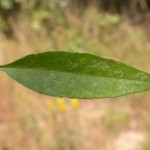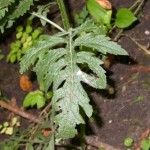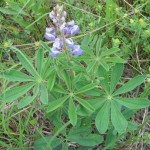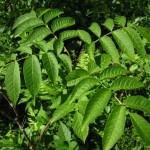YOUR DAILY DOSE OF BOTANY – DECEMBER 2012
Leaf Morphology
Scott Namestnik, snamestnik@orbisec.com
When you attended an INPAWS North field trip this past summer, it is possible that you heard the trip leader talking about some plants that had leaves with “pinnate” or “palmate” leaflets. What do these terms mean?
Plants can have leaves that are either simple or compound. Simple leaves are those that, although sometimes lobed, are not divided all the way to the midvein. Compound leaves, on the other hand, are divided, with the divisions reaching all the way to the midvein. The resulting parts of a compound leaf are then referred to as “leaflets.”
When leaves are compound, the leaflets can generally be arranged in one of two ways. Pinnately compound leaves are arranged like a feather, with leaflets along the rachis (the “midvein” of the overall leaf). Palmately compound leaves are arranged like a hand, with leaflets radiating from (or very nearly from) a common point at the end of the petiole (the leaf stalk).
When leaves are compound, the leaflets can generally be arranged in one of two ways. Pinnately compound leaves are arranged like a feather, with leaflets along the rachis (the “midvein” of the overall leaf). Palmately compound leaves are arranged like a hand, with leaflets radiating from (or very nearly from) a common point at the end of the petiole (the leaf stalk).
If you have a question about plants that you would like answered in a future edition of this column, send me an email at snamestnik@orbisec.com. I may not be able to address all requests given the space allotted for this column, but I will answer those that I can.




